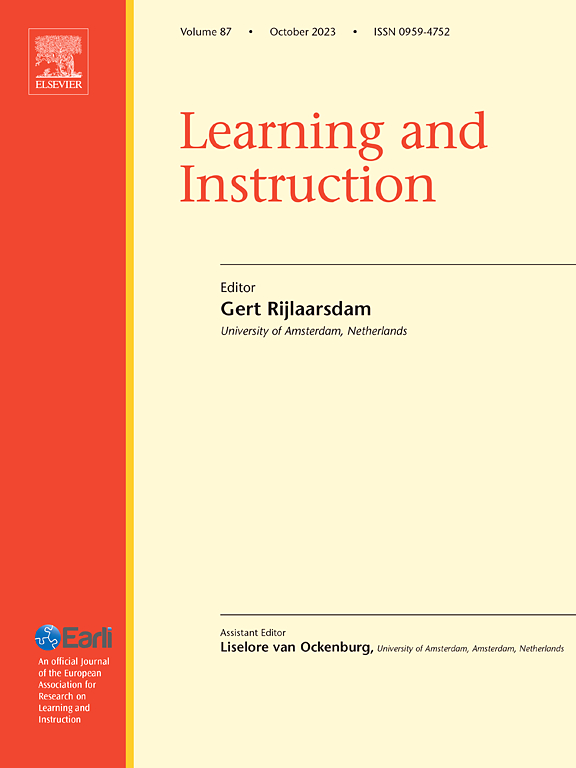以游戏为基础的综合课程与同步音乐有效提高儿童的基本运动技能(FMS)
IF 4.9
1区 教育学
Q1 EDUCATION & EDUCATIONAL RESEARCH
引用次数: 0
摘要
音乐与运动相结合的综合项目有效地提高了儿童的基本运动技能。然而,同步和异步音乐对FMS改善的效果比较仍然没有定论。本研究的主要目的有三个:1)评估FMS中以游戏为基础的同步音乐运动课程的有效性,2)确定干预课程是否在提高物体控制技能方面特别有效,3)评估干预课程是否对所有任务都有效。方法采用多变量协方差分析(MANCOVA)对实验组(EG)与对照组(CG)在干预方案实施后的差异进行分析。结果大的F值表明,同步音乐的游戏运动对FMS的改善更有效,不仅可以提高运动技能,还可以提高物体控制技能。η2值表明,同步音乐综合课程对提高对象控制能力更有效。诸如跑步、跳跃和水平跳跃等任务,以及其他两项任务,在干预后没有显示出显著的变化。结论总体而言,同步音乐的基于游戏的运动课程提高了FMS,特别是在物体控制技能方面。然而,它在某些单独的任务上并没有显示出显著的效果。未来的研究应该探索其他音乐元素,如节奏变化,如何影响特定的FMS活动。本文章由计算机程序翻译,如有差异,请以英文原文为准。
A play-based integrated curriculum with synchronous music efficiently enhance Children's fundamental movement skills (FMS)
Background
Integrated programs combining music and movement effectively enhance children's Fundamental Movement Skills (FMS). Nonetheless, the efficacy comparison between synchronous and asynchronous music in FMS improvement remains inconclusive.
Aims
The primary purposes of this study are threefold: 1) to evaluate the effectiveness of a play-based movement curriculum with synchronous music in FMS, 2) to determine if the intervention curriculum is particularly effective in improving object control skills, 3) to assess whether the intervention curriculum is effective across all tasks.
Methods
A multivariate analysis of covariance (MANCOVA) was conducted to examine the differences between the experimental group (EG) and control group (CG) following the intervention program.
Results
Large F values suggest that play-based movements with synchronous music are more effective in improving FMS, enhancing not only locomotor skills but also object control skills. The η2 value indicates that the integrated curriculum with synchronous music is more effective for enhancing object control skills. Tasks such as running, leaping, and horizontal jumping, along with two other tasks, did not show significant changes following the intervention.
Conclusions
Overall, the play-based movement curriculum with synchronous music enhance FMS, particularly in object control skills. However, it did not show significant effects on certain individual tasks. Future research should explore how other musical elements, such as tempo variations, influence specific FMS activities.
求助全文
通过发布文献求助,成功后即可免费获取论文全文。
去求助
来源期刊

Learning and Instruction
Multiple-
CiteScore
11.30
自引率
4.80%
发文量
109
期刊介绍:
As an international, multi-disciplinary, peer-refereed journal, Learning and Instruction provides a platform for the publication of the most advanced scientific research in the areas of learning, development, instruction and teaching. The journal welcomes original empirical investigations. The papers may represent a variety of theoretical perspectives and different methodological approaches. They may refer to any age level, from infants to adults and to a diversity of learning and instructional settings, from laboratory experiments to field studies. The major criteria in the review and the selection process concern the significance of the contribution to the area of learning and instruction, and the rigor of the study.
 求助内容:
求助内容: 应助结果提醒方式:
应助结果提醒方式:


